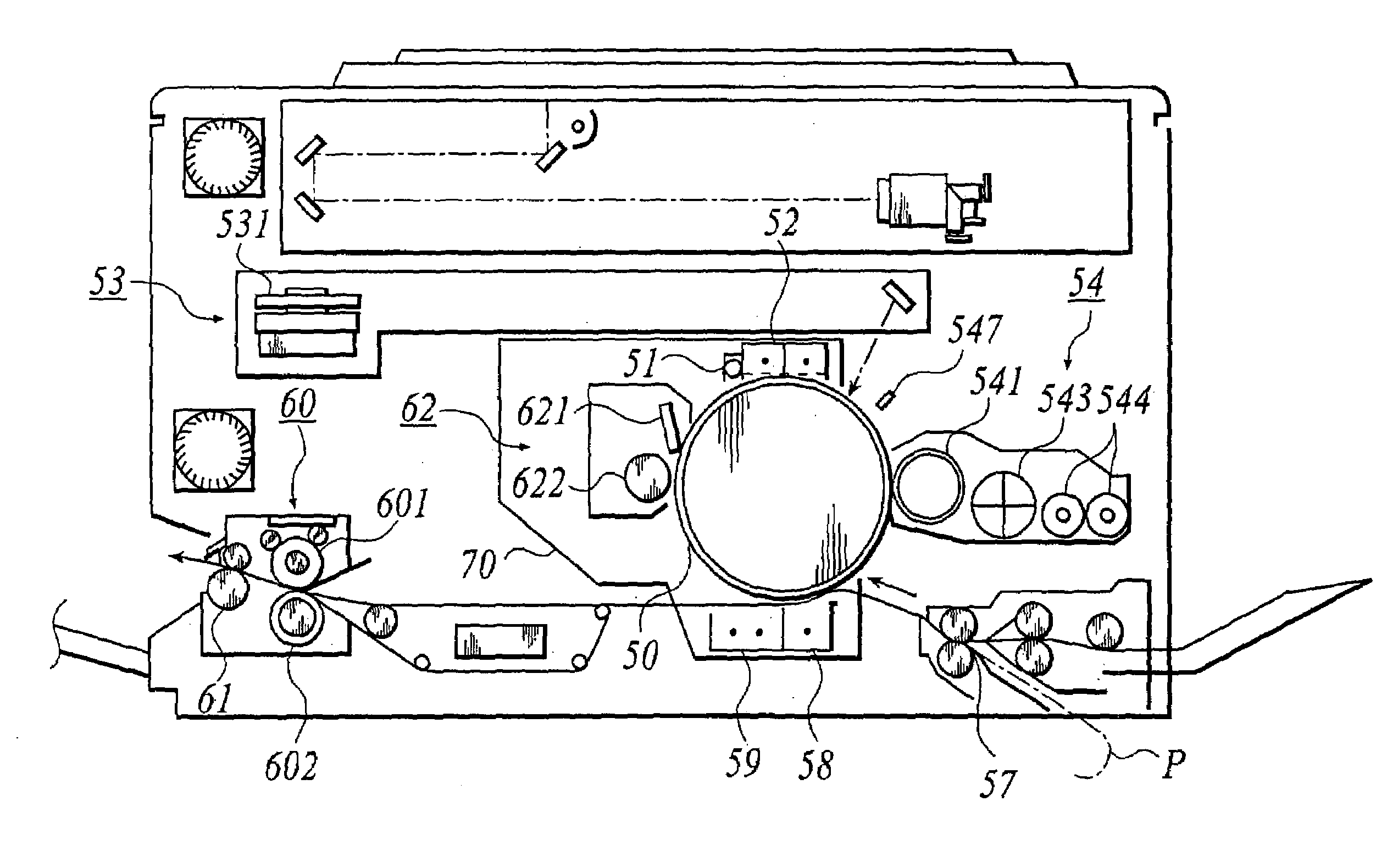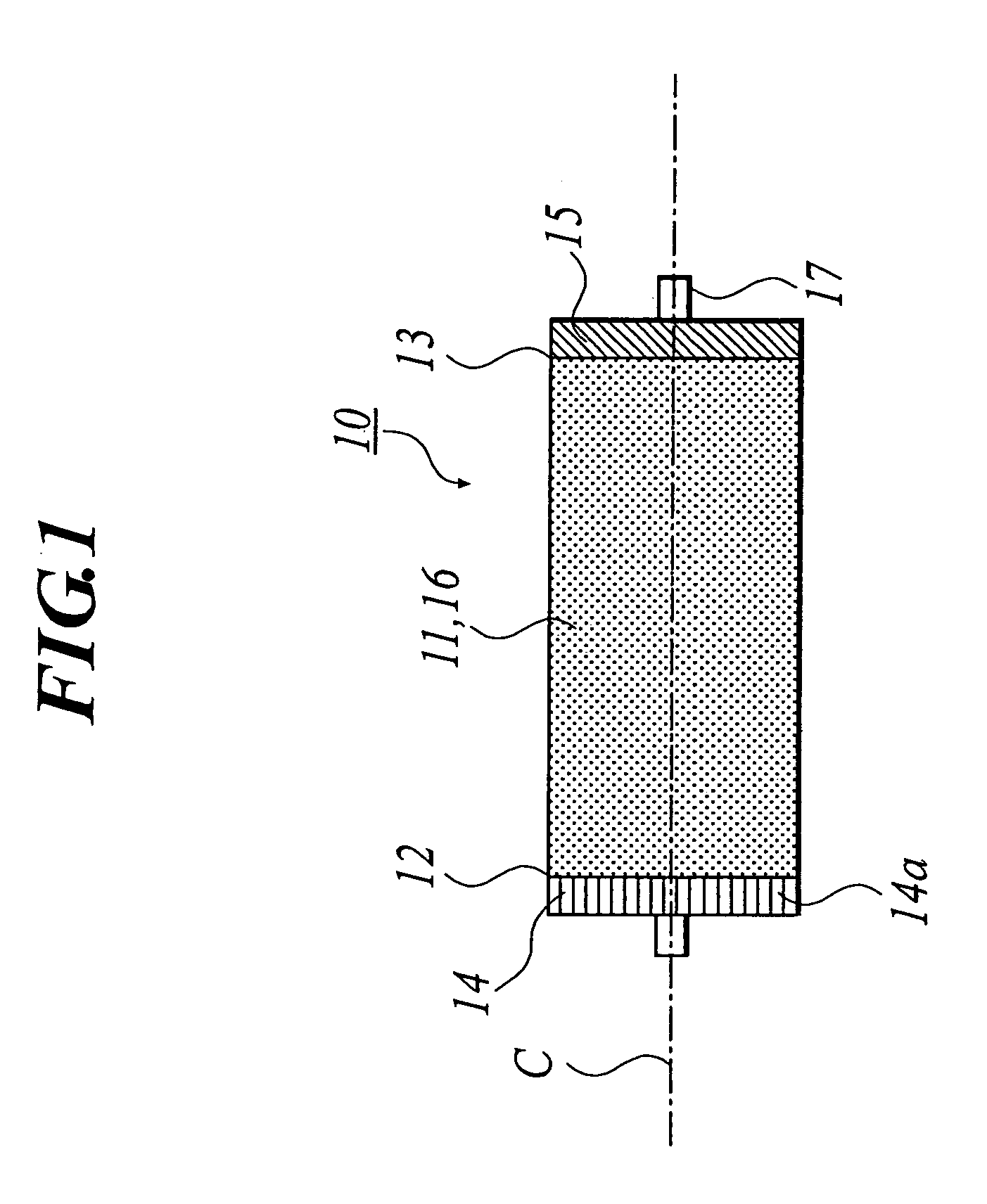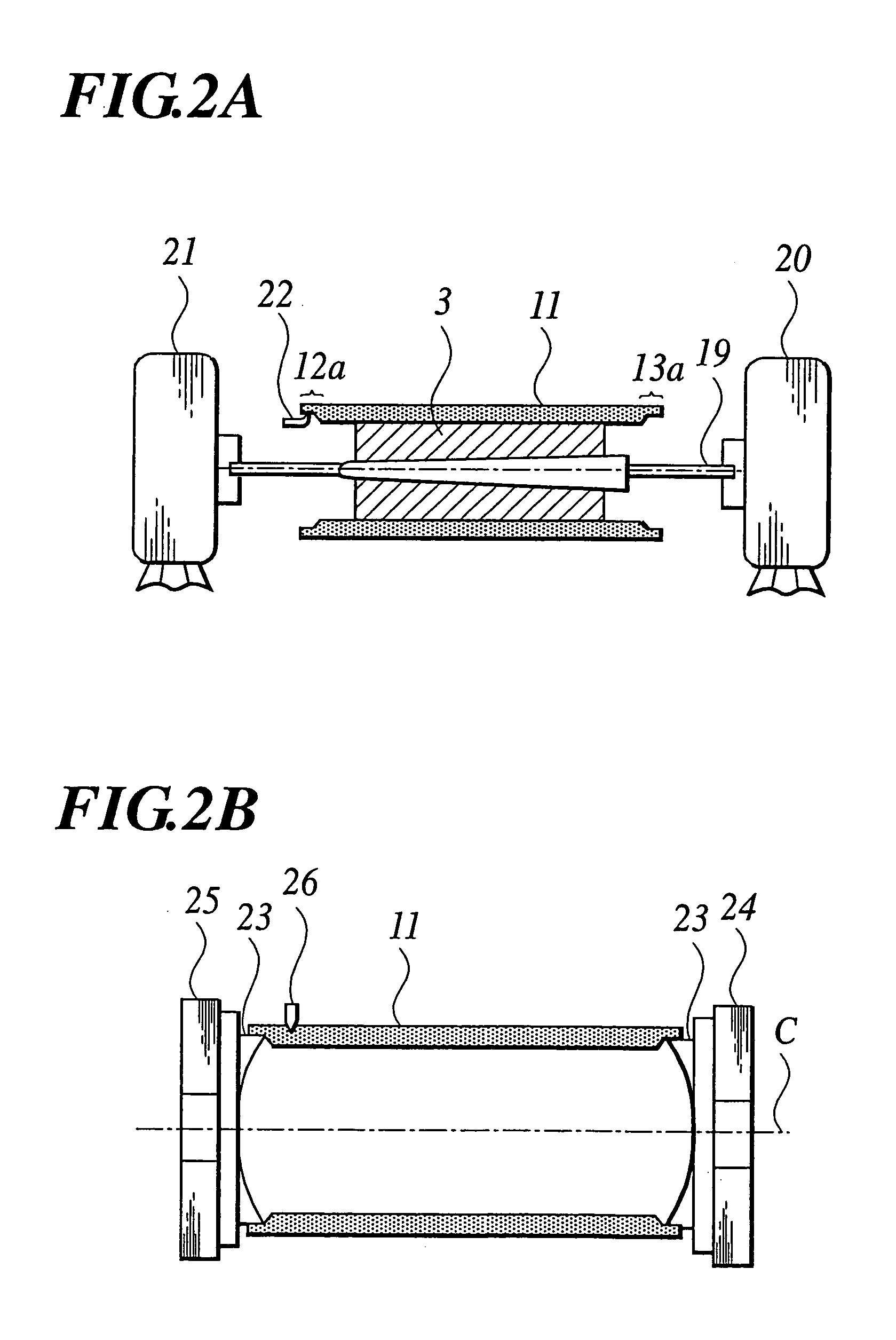Image forming method
a technology of image forming and forming tubes, applied in the field of image forming methods, can solve the problems of difficult cleaning of the photoreceptor, inability to achieve high-quality images in practice, and use of small-diameter toners, etc., and achieve the effect of high-quality electrophotographics
- Summary
- Abstract
- Description
- Claims
- Application Information
AI Technical Summary
Benefits of technology
Problems solved by technology
Method used
Image
Examples
example 1
of Preparation of Latex
[0243]Into a 5,000 ml separable flask equipped with a stirrer, a temperature sensor, a cooling tube and a nitrogen gas feeder, a solution prepared by dissolving 7.08 g of an anionic surface active agent (sodium dodecylbenzenesulfonate: SDS) in 2,760 g of ion exchanged water was added. The inside temperature was raised to 80° C. under a nitrogen gas flow while stirring at 230 rpm. The compound represented by the aforementioned formula 19 (72.0 g) was added to a monomer mixture comprising 115.1 g of styrene, 42.0 g of n-butyl acrylate and 10.9 g of methacrylic acid. The mixture was then heated at 80° C. to dissolve the solids to obtain a monomer solution.
[0244]The heated monomer solution was mixed with and dispersed into the heated surface active agent solution using a mechanical type dispersing device provided with a circulation channel to obtain a dispersion containing emulsified particles having a uniform dispersion particle diameter. Subsequently, a solution...
PUM
 Login to View More
Login to View More Abstract
Description
Claims
Application Information
 Login to View More
Login to View More - R&D
- Intellectual Property
- Life Sciences
- Materials
- Tech Scout
- Unparalleled Data Quality
- Higher Quality Content
- 60% Fewer Hallucinations
Browse by: Latest US Patents, China's latest patents, Technical Efficacy Thesaurus, Application Domain, Technology Topic, Popular Technical Reports.
© 2025 PatSnap. All rights reserved.Legal|Privacy policy|Modern Slavery Act Transparency Statement|Sitemap|About US| Contact US: help@patsnap.com



